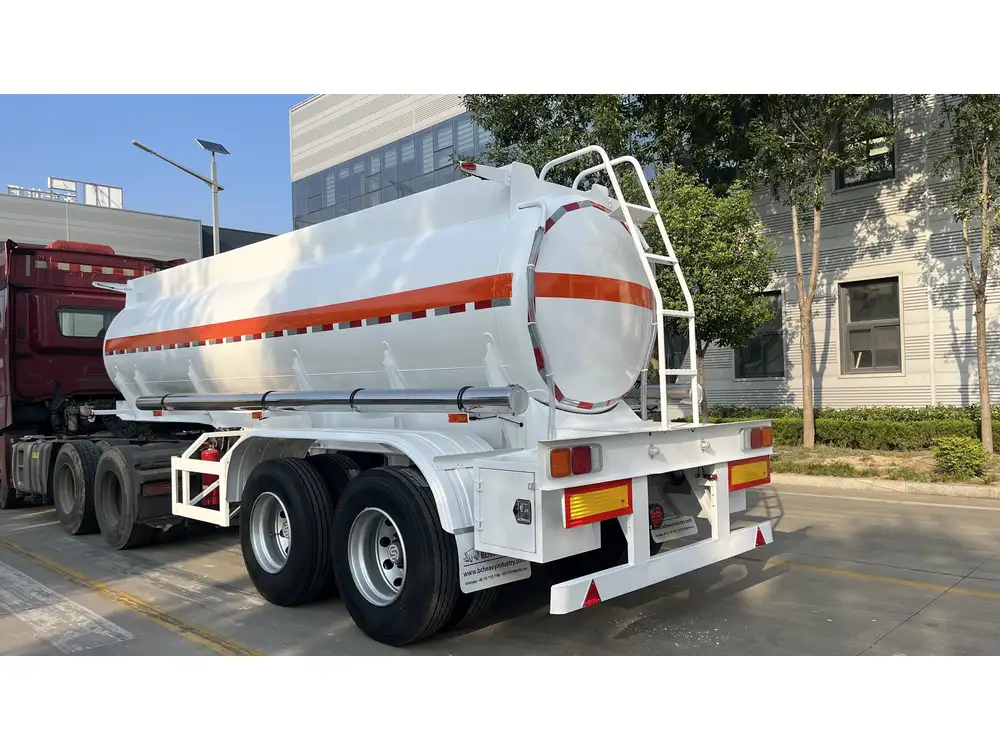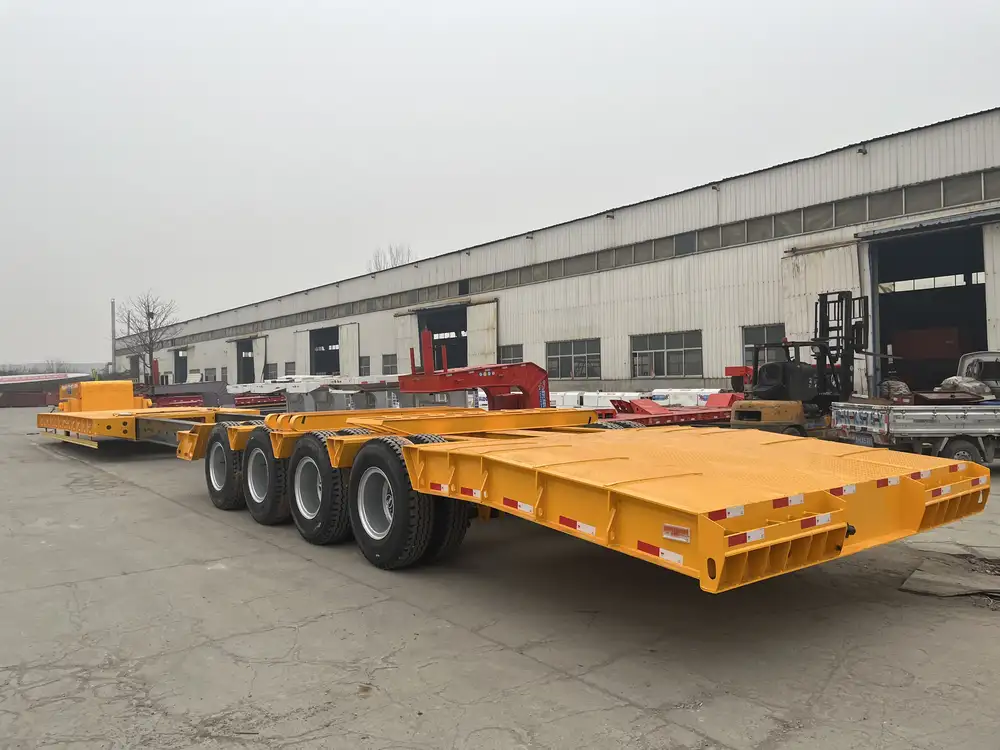Understanding Gooseneck Flatbed Trailers
Gooseneck flatbed trailers are an essential asset for various industries, primarily due to their impressive capacity to haul heavy loads over long distances. Designed with a distinctive hitch that connects to the bed of a pickup truck via a gooseneck, these trailers provide superior stability and maneuverability compared to traditional bumper pull trailers. Knowing the best options available can significantly affect efficiency and safety in transporting goods.
Key Features of Gooseneck Flatbed Trailers
When evaluating the best gooseneck flatbed trailers, specific features warrant attention:
| Feature | Description |
|---|---|
| Weight Capacity | Varies; typically ranges from 12,000 to 30,000 pounds or more. |
| Material | Steel and aluminum are common; affects weight and durability. |
| Deck Length | Typically ranges from 20 to 40 feet; impacts cargo capacity. |
| Axle Configuration | Dual or triple axles enhance weight distribution and stability. |
| Brakes | Electric or hydraulic brakes for improved stopping power. |
| Loading Ramp | Optional foldable or retractable ramps for easier loading. |
| Tire Size | Larger tires improve road handling and reduce wear. |
| Customization Options | Custom features like storage boxes, tie-down points, and paint. |
This table summarizes significant features to consider when assessing different models.

The Importance of Choosing the Right Gooseneck Flatbed Trailer
Transporting heavy equipment or oversized loads requires meticulous planning and execution. A subpar gooseneck flatbed trailer can lead to safety concerns, legal repercussions, and financial losses. The right trailer not only minimizes risk but also boosts productivity. A robust, well-constructed trailer enhances load security while ensuring compliance with transport regulations, thus making it a crucial investment.
Common Applications of Gooseneck Flatbed Trailers
The versatility of gooseneck flatbed trailers positions them as ideal solutions in various sectors:
- Construction: Ideal for hauling heavy machinery such as excavators, bulldozers, and scaffolding materials.
- Agriculture: Frequently used to transport farm equipment, livestock, and feed.
- Automotive: Ideal for carrying cars, trucks, and other vehicles during transport.
- Recreational Vehicles: Popular among RVers for transporting trailers and camping equipment.
- Landscaping: Essential for moving bulk materials like soil, mulch, and landscaping equipment.
Understanding the application is crucial in selecting the best trailer for specific needs.
Factors to Consider When Selecting a Gooseneck Flatbed Trailer

1. Load Capacity
The most critical factor is the weight capacity of the trailer. Often, a higher weight rating means a sturdier design, allowing for safer transport. Here’s a comparison of common weight capacities:
| Trailer Type | Typical Weight Capacity |
|---|---|
| Single Axle Gooseneck | 12,000 – 15,000 lbs |
| Dual Axle Gooseneck | 16,000 – 20,000 lbs |
| Triple Axle Gooseneck | 20,000 – 30,000 lbs or more |
2. Build Quality and Materials
The construction materials—be it steel or aluminum—affect both durability and weight:
- Steel Trailers: Generally more durable but may require maintenance to prevent rust.
- Aluminum Trailers: Lighter and resistant to corrosion but can be pricier and less heavy-duty compared to steel.
3. Axle Configuration
The axle configuration influences the load distribution:
- Single Axle: Best for lighter loads.
- Dual Axle: Provides better weight distribution and is suitable for most common uses.
- Triple Axle: Ideal for significantly heavy loads, improving stability and safety.

4. Ramp Options
Easy loading and unloading can save substantial time. Consider the type of ramp:
- Foldable Ramps: These can be stored when not in use but require additional setup time.
- Hydraulic or Powered Ramps: More convenient but typically at a higher price point.
Comparing Leading Gooseneck Flatbed Trailer Brands
Among various manufacturers, several brands stand out for their quality and performance. Here’s a comparative overview of leading options:
| Brand | Strength | Weakness |
|---|---|---|
| Big Tex | Strong construction; multiple axle options | Higher price, limited customization |
| PJ Trailers | Excellent weight ratings; versatile models | Slightly heavy; can be cumbersome to maneuver |
| Diamond C | Innovative design; superior loading features | Higher initial cost |
| Load Trail | Budget-friendly; good basic models | Quality may vary across models |
| Bison Trailers | Lightweight yet durable; custom options | Less availability in some regions |
Taking customer reviews and expert opinions into account can provide additional insights into which brand will meet your specific requirements.
Innovative Features to Look For
As technology advances, so do the features of gooseneck flatbed trailers. Here are some innovations enabling effective and efficient transportation:
- Load Tracking Systems: GPS-enabled systems help monitor load weight and distribution.
- Smart Braking Systems: Allows for enhanced braking performance, reducing stopping distances.
- Modular Design: Features that allow users to customize and adapt trailer configurations depending on the cargo.
- Advanced Lighting: LED or solar-powered lights increase visibility and safety, especially at night.

Pricing and Cost Considerations
Understanding the pricing model will aid in setting a budget and preventing overspending. Factors influencing trailer pricing include:
- Material: Aluminum trailers typically cost more.
- Size and Customization: Larger and customized trailers naturally command higher prices.
- Brand: Established brands may carry a premium price due to their reputation.
Here’s a rough estimation of pricing:
| Trailer Type | Estimated Price Range |
|---|---|
| 20 ft Gooseneck | $6,000 – $12,000 |
| 30 ft Gooseneck | $10,000 – $20,000 |
| 40 ft Gooseneck | $15,000 – $30,000 |
Keep in mind that these prices may vary based on region, dealer, and additional features.
Safety Measures for Gooseneck Flatbed Trailers
Navigating roads with heavy loads requires stringent safety protocols. Outline some core practices for safe trailer usage:
Pre-Trip Inspection
Before embarking on a trip, conduct a thorough inspection, ensuring that:
- Tires are properly inflated and have sufficient tread.
- Brakes function correctly.
- Lights are operational.
- Load is secured and balanced.

Safe Loading Techniques
Cargo Distribution
Evenly distribute the cargo weight to maintain stablity. This involves:
- Keeping heavier objects closer to the trailer’s axles.
- Ensuring the center of gravity remains low.
Use of Tie-Downs
Employ high-quality tie-downs to secure cargo effectively, preventing movement during transport, which can lead to accidents or damage.

Conclusion
Selecting the best gooseneck flatbed trailer is a critical decision that can significantly affect operational success in transporting goods. By taking into account the features, weights, applications, and safety considerations discussed, you can make an informed choice that meets your transportation needs effectively.
Investing in the right trailer will not only heighten operational efficiency but also enhance safety during transport, paving the way for a smoother shipping experience in the various industries that rely on gooseneck flatbed trailers.



